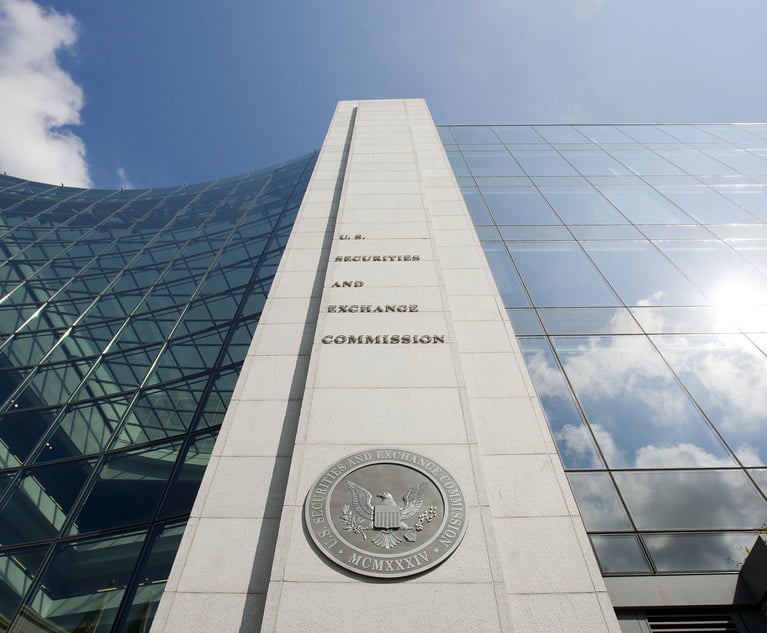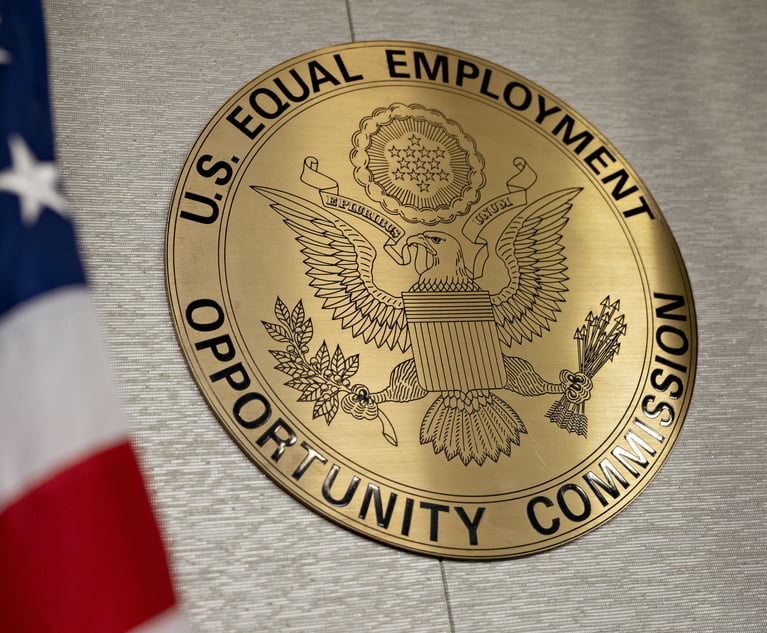Antitrust Proceedings Get Easier For Canadian Companies
Barcode Company Wins Big With Court Decision
February 28, 2005 at 07:00 PM
7 minute read
Winnipeg-based Barcode Systems Inc.'s business depended on selling Symbol Technologies Inc.'s barcode scanners and software. In fact, Symbol's equipment comprised 75 percent of Barcode's sales. So when the two got into a contract dispute and New York-based Symbol announced in May 2003 it would no longer sell Barcode any equipment, executives at the Canadian company thought their days were numbered. And they would have been had Symbol severed the supply chain 18 months earlier.
Luckily for Barcode, the Canadian government earlier that year had amended the Competition Act–Canada's antitrust law. The changes gave companies direct access to the Competition Tribunal, the administrative body that adjudicates restrictive trade practices. Previously, companies had to lobby the competition commissioner to file a complaint–a long and often unproductive process.
Although the amendment gave companies a slightly better chance to have their complaints heard, there was one hitch. They still had to seek leave from the tribunal itself before they would be granted a full hearing. That too was often a fruitless undertaking–before Barcode, not a single company had succeeded in obtaining permission to move ahead.
All that changed with the Federal Court of Appeal's October decision in Symbol Technologies Canada ULC v. Barcode Systems Inc. The ruling, the first that allows a private applicant to initiate restrictive trade practice proceedings before the tribunal, could change the landscape of competition law in Canada.
“Symbol lets the cat out of the bag so far as private access to tribunals is concerned,” says Seymour Trachimovsky, chief legal officer at ZENON Environmental Inc., a water-treatment company in Ontario, and former general counsel at DuPont Canada. Trachimovsky helped prepare a parliamentary brief for the Canadian Council of Chief Executives regarding the private access changes.
Cracking The Code
Before 2002 only the commissioner of the competition bureau could file complaints with the tribunal. If the commissioner decided not to pursue a claim, the complainants were out of luck. Their only remedy was to file suit for damages in the civil courts, which did little to resolve their short-term problems.
“The private access amendments were intended as a means for small- and medium-sized businesses to get relief while the commission was busy with bigger fish,” says George Addy, a partner at Davies Ward Phillips & Vineberg in Toronto.
Accordingly, government officials designed the leave application to be a speedy and cost-effective summary procedure. Applicants could support their leave application with affidavit evidence, followed promptly by a hearing at which a member of the tribunal would decide whether or not to grant leave. Respondents couldn't delay the proceedings, because they aren't allowed to cross-examine the applicant's affidavit, or file their own material.
But the new process still kept most companies from having their complaints heard. Donald Jack, a partner at Lerners' Toronto office believes the tribunal members imposed an unacceptably high standard of proof at the leave stage.
“If you wanted to impress the tribunal, you couldn't do it for a small client, because the earlier decisions required applicants to obtain a costly accounting study at the leave stage, before they even knew whether it could proceed further,” he says. “On a leave application, you should be able to say 'here is what the evidence would be' and not have to produce the study itself until the substantive application.”
Essentially, that's what the Court of Appeal said in Symbol, a saga that began nearly 10 years ago.
Access Denied
In 1994 Barcode became Symbol's exclusive distributor in Western Canada. Four years later the company agreed to let Symbol sell to other distributors in Western Canada so long as it gave Barcode a significant discount. But the relationship soured over time, with each side accusing the other of breaching the agreement. Still 75 percent of Barcode's 2002 revenues of $16 million came from the sale of Symbol's products.
In January 2003 Symbol told Barcode it would no longer supply it with replacement parts for Symbol products, severely limiting Barcode's ability to service its customers. Two months later Barcode sued for damages.
That suit only made things worse. Soon after Barcode filed suit, Todd Abbott, executive vice president of Symbol USA, threatened to “bury” Barcode and to “take all [Barcode's] customers,” according to an affidavit filed in November 2003 by David Sokolow, Barcode's president, in support of the leave application.
On May 1, 2003, Symbol stopped supplying products to Barcode.
Barcode's revenues plummeted to $8 million by September 2003. Two months later the company filed its private access complaint under the Competition Act. The company sought leave to apply for an order requiring Symbol to accept Barcode as a customer.
The tribunal granted leave in January 2004. Symbol appealed, arguing that Sokolow's affidavit–Barcode's only evidence in the case–hadn't established that Symbol's refusal to deal was likely to have “an adverse effect on competition in a market,” as the statute required.
But the Federal Court upheld the tribunal's decision.
The court reasoned that the leave application wasn't the proper place to finally determine whether Symbol's actions adversely affected the barcode market in Western Canada. Rather, if there were any “reasonable grounds” to believe that Symbol's refusal to deal could have such an effect, Barcode should receive the benefit of the doubt on the leave application. The proper place to finally determine whether the market was in fact adversely affected was on the substantive application itself, where Barcode would have to prove its case.
Sokolow's affidavit stated simply that Symbol's refusal to supply impeded Barcode's ability to compete effectively in the Western Canada market. This was “not strong” evidence that Symbol's actions adversely affected the market, the court noted, but it was sufficient to grant leave.
It also was a sufficiently low standard to cause concern among some observers.
“The decision creates an environment in which private access could be used strategically against competitors or suppliers because applicants can assert a claim without any test of their assertions on the leave application,” says David Wolinsky, assistant general counsel with Bell Canada.
Private Entry
As Wolinsky sees it, Symbol may encourage companies to abuse the leave application process.
“Once leave is granted, respondents will either have to spend a lot of money to fight the substantive application or they'll have to settle quickly because it isn't worth the money to fight it,” he says.
According to many experts, that's not what Parliament intended.
“The people who drafted the legislation intended the leave process as a way of ensuring that private access would be used only for genuine grievances and not to tie up competitors or suppliers,” says John Dillon, chairman of the business roundtable of the Canadian Council of Chief Executives and chairman and CEO of International Paper Co.
Ironically, some large companies may discover they can use private access to their own strategic advantage against competitors. In situations where they believe the competition commissioner won't act on a complaint or won't act quickly enough, companies may decide to take matters into their own hands through the private access mechanism.
“So far, private access hasn't been used by large corporations, but the low leave threshold almost certainly means the opportunity to do so will arise over time,” Wolinsky says.
This content has been archived. It is available through our partners, LexisNexis® and Bloomberg Law.
To view this content, please continue to their sites.
Not a Lexis Subscriber?
Subscribe Now
Not a Bloomberg Law Subscriber?
Subscribe Now
NOT FOR REPRINT
© 2025 ALM Global, LLC, All Rights Reserved. Request academic re-use from www.copyright.com. All other uses, submit a request to [email protected]. For more information visit Asset & Logo Licensing.
You Might Like
View All

Trending Stories
- 1Delaware Supreme Court Names Civil Litigator to Serve as New Chief Disciplinary Counsel
- 2Inside Track: Why Relentless Self-Promoters Need Not Apply for GC Posts
- 3Fresh lawsuit hits Oregon city at the heart of Supreme Court ruling on homeless encampments
- 4Ex-Kline & Specter Associate Drops Lawsuit Against the Firm
- 5Am Law 100 Lateral Partner Hiring Rose in 2024: Report
Who Got The Work
J. Brugh Lower of Gibbons has entered an appearance for industrial equipment supplier Devco Corporation in a pending trademark infringement lawsuit. The suit, accusing the defendant of selling knock-off Graco products, was filed Dec. 18 in New Jersey District Court by Rivkin Radler on behalf of Graco Inc. and Graco Minnesota. The case, assigned to U.S. District Judge Zahid N. Quraishi, is 3:24-cv-11294, Graco Inc. et al v. Devco Corporation.
Who Got The Work
Rebecca Maller-Stein and Kent A. Yalowitz of Arnold & Porter Kaye Scholer have entered their appearances for Hanaco Venture Capital and its executives, Lior Prosor and David Frankel, in a pending securities lawsuit. The action, filed on Dec. 24 in New York Southern District Court by Zell, Aron & Co. on behalf of Goldeneye Advisors, accuses the defendants of negligently and fraudulently managing the plaintiff's $1 million investment. The case, assigned to U.S. District Judge Vernon S. Broderick, is 1:24-cv-09918, Goldeneye Advisors, LLC v. Hanaco Venture Capital, Ltd. et al.
Who Got The Work
Attorneys from A&O Shearman has stepped in as defense counsel for Toronto-Dominion Bank and other defendants in a pending securities class action. The suit, filed Dec. 11 in New York Southern District Court by Bleichmar Fonti & Auld, accuses the defendants of concealing the bank's 'pervasive' deficiencies in regards to its compliance with the Bank Secrecy Act and the quality of its anti-money laundering controls. The case, assigned to U.S. District Judge Arun Subramanian, is 1:24-cv-09445, Gonzalez v. The Toronto-Dominion Bank et al.
Who Got The Work
Crown Castle International, a Pennsylvania company providing shared communications infrastructure, has turned to Luke D. Wolf of Gordon Rees Scully Mansukhani to fend off a pending breach-of-contract lawsuit. The court action, filed Nov. 25 in Michigan Eastern District Court by Hooper Hathaway PC on behalf of The Town Residences LLC, accuses Crown Castle of failing to transfer approximately $30,000 in utility payments from T-Mobile in breach of a roof-top lease and assignment agreement. The case, assigned to U.S. District Judge Susan K. Declercq, is 2:24-cv-13131, The Town Residences LLC v. T-Mobile US, Inc. et al.
Who Got The Work
Wilfred P. Coronato and Daniel M. Schwartz of McCarter & English have stepped in as defense counsel to Electrolux Home Products Inc. in a pending product liability lawsuit. The court action, filed Nov. 26 in New York Eastern District Court by Poulos Lopiccolo PC and Nagel Rice LLP on behalf of David Stern, alleges that the defendant's refrigerators’ drawers and shelving repeatedly break and fall apart within months after purchase. The case, assigned to U.S. District Judge Joan M. Azrack, is 2:24-cv-08204, Stern v. Electrolux Home Products, Inc.
Featured Firms
Law Offices of Gary Martin Hays & Associates, P.C.
(470) 294-1674
Law Offices of Mark E. Salomone
(857) 444-6468
Smith & Hassler
(713) 739-1250







